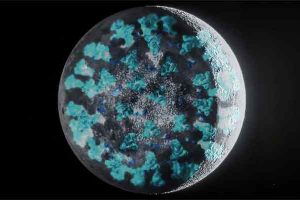
- Avi Loeb, astronomy’s resident bad boy, suggests the universe may have been created in a laboratory.
- Our supposed creators, Loeb writes in an op-ed published in Scientific American last year, may have developed the technology needed to construct “baby universes” capable of producing life.
- He also introduces a new classification system for advanced civilizations.
Could our universe have been created in a petri dish? Avi Loeb seems to think so. The Harvard astronomer posits that a higher “class” of civilization may have conjured up our universe in a laboratory far, far away.
“Since our universe has a flat geometry with a zero net energy, an advanced civilization could have developed a technology that created a baby universe out of nothing through quantum tunneling,” Loeb writes in an op-ed published by Scientific American last year.
This theory, he suggests, would unite two seemingly opposite notions: the idea that a higher power might be driving our fate, and the secular concept of quantum gravity (a field of physics that seeks to work gravity into the theory of quantum mechanics—something that, to the bane of physicists everywhere, we haven’t been able to do yet on Earth). Primarily, this theory hinges on a far-off advanced civilization’s ability to meld both quantum mechanics and gravity and subsequently identify and recreate all of the universe’s ingredients. (Sounds like a lot of work, t0 be honest.)
He also introduces a new way of classifying exactly what makes a civilization advanced—one that veers away from Soviet astrophysicist Nikolai Kardashev’s system, which organizes civilizations based on the amount of energy they generate and consume.
According to Kardashev, Type I civilizations—greetings, Earthlings!—are only advanced enough to utilize the starlight that reaches their planet (4×1012 watts), while Type II civilizations have mastered the ability to fully harness their host star’s power (4×1026 watts). Dyson sphere, anyone? Type III civilizations, the final classification in his framework, are able to harness all of the energy within their galaxy (a whopping 4×1037 watts).






